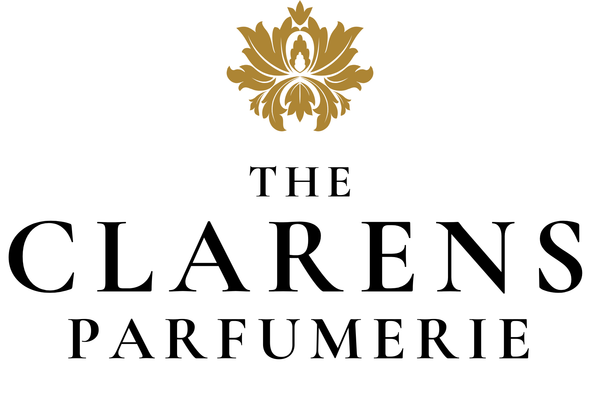The Complete Guide to Perfume in South Africa
The Complete Guide to Perfume in South Africa
… and why “Because perfume should never be predictable” might be rule worth keeping
South Africa doesn’t wear fragrance quietly. From payday splurges to Black Friday cart-fests; from airport duty-free dashes to pharmacy deals and fashion-site flash sales; we’re a nation that loves to smell great. But the landscape is noisy—designer icons jostle with promo sets, along with parallel imports, South African fragrance dupes and artisan makers.
This guide helps you navigate it all—and, most importantly, choose a scent that feels like you.

Where South Africans actually buy perfume (and what each channel does best)
Pharmacy beauty chains (Think: Clicks & Dis-Chem).
We all know these. You get reliable nationwide coverage, constant promos, and easy click-and-collect. You’ll find mainstream designer staples, celebrity scents, value gift sets, and big seasonal sales.
Department & specialty beauty (Edgars, ARC, etc.).
These offer wider curation, counter service, and frequent “buy 2 save” campaigns. This is where icons like Dior Sauvage and Coco Mademoiselle usually dominate front-of-shelf and promo banners.
Premium grocery & lifestyle (Woolworths Beauty).
Authorised assortments, giftable sets, “Best Sellers” curation and convenient fulfilment. An anchor for Chanel, Narciso, Versace, and seasonal edits.
Fashion platforms & omni-retail (Bash / TFG, Superbalist).
A wide spectrum from everyday body mists to designer lines—often with pay-later and free-delivery thresholds that sweeten bigger purchases.
Marketplaces (Takealot).
Huge selection and aggressive pricing—but pay attention to “Parallel Import” labels and seller reputation. Marketplace convenience comes with extra due-diligence for authenticity and warranty.
Online Genuine Fragrance Retailers.
Large selection and often aggressive pricing. As before, paying attention to seller reputation is important to ensure you're getting genuine scents.
Inspired-by/fragrance dupes/smells like companies
More and more of these, offering scents that are designed to smell like famous fragrances, for a lower cost.
Independent ateliers and artisanal houses (like us!).
Micro-batches, naturals, and storytelling blends you simply won’t find in mass retail. We’ll talk about the local-botanical magic later—but this is where “unexpected” truly lives.
What perfume costs in South Africa (typical price bands)
South African pricing spans from under-R100 body mists to R7k+ luxury niche.
- Body mists & value EDTs: ~R95–R250 (large mists; entry EDTs). Great daily spritzers, huge sizes, light concentration.
- Celebrity / mass designer 30–50 ml: ~R500–R1 000 (watch promo calendars at pharmacy chains).
- Designer 100 ml & gift sets: ~R1 500–R3 500 depending on house and concentration (EdP vs Parfum). Versace, Dior, etc., often sit here.
- Luxury / niche & prestige: R3 000–R7 650+ for 50–100 ml (e.g., Tom Ford Private Blend, special concentrations), reflecting import duties and brand position.
Best-sellers & icons you’ll keep seeing
Every market has its evergreens. In SA retail, Dior Sauvage and Versace Eros are perennial front-runners on department-store shelves, while Chanel Coco Mademoiselle anchors premium edits. You’ll spot them highlighted and well-reviewed in local beauty catalogues—partly because they’re consistent crowd-pleasers, partly because stores secure supply and marketing support.
Global trend pieces point to bolder gourmands, bigger projection, and warm “comfort” notes cresting in 2025—think vanilla, woods, caramel facets—so you’ll likely see more of those profiles placed prominently in SA, too.
A word on “Because perfume should never be predictable”
Expected scents are great. But the scent that stays with you usually lives just off the beaten path. That’s our house philosophy. We hand-blend artisanal perfumes that sit beautifully close to skin, travel from ceremony to rooftop, and keep others guessing. When you’re ready to sidestep the obvious, we’ll meet you there.

The rise of fragrance dupes South Africa, “inspired-by,” and alternatives (how to think about them)
What they are.
“Dupes” and “inspired-by” fragrances aim to mimic the scent profile of a popular perfume at a fraction of the price—often changing packaging and naming to avoid direct IP infringement. The model thrives globally (fast-fashion chains, online sellers) and is visible locally via “inspired-by” catalogues and social content.
- Pros: lower price, playful experimenting, low-risk way to test a vibe.
- Cons: variable quality & longevity; potential for misleading naming/packaging; inconsistent batch control; unclear compliance (IFRA, allergen labelling).
How to shop safer in SA:
- Look for clear labelling (INCI, batch, manufacturer/importer details) aligned to our cosmetic-labelling rules (Foodstuffs, Cosmetics & Disinfectants Act + CTFA Code). If it hides behind “fragrance oil only” or omits basics, be cautious.
- Beware sellers claiming “factory rejects” as a quality badge—legal and brand experts warn there’s no consumer market for “rejects”; that language often masks fakes.
- If a site mixes “inspired-by” names with unusually cheap “branded” bottles, that’s a red flag; compare to authorised pricing at major retailers (see price bands above).
Counterfeits vs. parallel imports (not the same).
Recent local headlines show how counterfeit concerns can hit mainstream shelves; serious retailers typically remove stock pending investigation. Knowing the difference protects your wallet and your skin. News24
South African Essential Oils & Unusual Aromatics: a Short Field Guide
Cape Chamomile (Eriocephalus punctulatus) — blue, honeyed, unforgettable
Distilled from a hardy Cape shrub, Cape Chamomile is famed for its striking deep blue oil and a diffusive, fruity-floral aroma with honeyed apple/pear facets. It’s native to South Africa, hand-harvested by specialist producers, and prized for the way it adds “lift” and a soft, comforting halo in fragrance.
-
Why perfumers love it: diffusive brightness without sharpness; blends elegantly with neroli, tea accords, and pale woods.
Two more local aromatics you’ll hear about
Tagetes (Khakibos, Tagetes minuta) — long naturalised in South Africa and distilled locally; the oil is vivid green-fruity/citrus-like and used sparingly to brighten compositions or tweak citrus notes. You’ll find SA suppliers listing it as a rare South African oil.
Cape May (Coleonema album) — a fynbos shrub yielding an herbaceous, slightly peppery oil high in myrcene. Traditionally used as a deodoriser/repellent, it brings crisp herbal sparkle to blends and is distinctly Cape in character.

